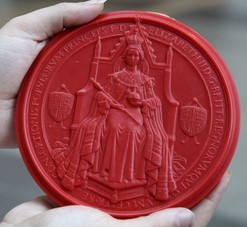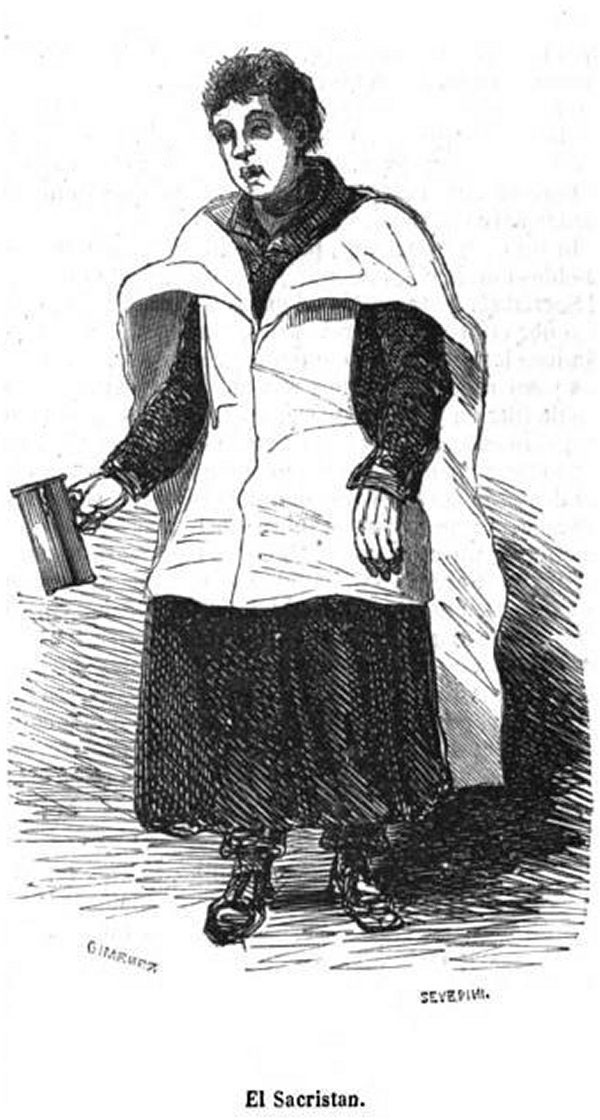|
Thomas Hay (bishop)
Thomas Hay was a 15th-century Scottish prelate. A canon of the diocese and cathedral of Aberdeen, on the translation of William Elphinstone from Bishop of Ross to Bishop of Aberdeen, Hay was provided as Elphinstone's successor in Ross, this occurring on 16 May 1483. He was probably the Thomas Hay who held the Aberdeen prebend of Turriff. It was Bishop Hay who, on 12 September 1487, with the consent of the cathedral chapter of Fortrose and at the request of King James III of Scotland, erected the church of St Duthac at Tain into a collegiate church, "for the increase of the divine worship of the chapel or collegiate church of the blessed confessor Duthac of Tain". The new church consisted of and was to support one provost, two deacons or sub-deacons, a sacrist, an assistant sacrist, and three child choristers; the five prebendary canonries were to be Cambuscurry, Dunskeath, Morangie, Newmore and Tarlogie. The erection was confirmed under the Great Seal of Scot ... [...More Info...] [...Related Items...] OR: [Wikipedia] [Google] [Baidu] |
Bishop Of Ross (Scotland)
The Bishop of Ross was the ecclesiastical head of the Diocese of Ross, Scotland, Ross, one of Scotland's 13 medieval Diocese, bishoprics. The first recorded bishop appears in the late 7th century as a witness to Adomnán of Iona's ''Cáin Adomnáin''. The bishopric was based at the settlement of Rosemarkie until the mid-13th century, afterwards being moved to nearby Fortrose and Fortrose Cathedral. As far as the evidence goes, this bishopric was the oldest of all bishoprics north of the River Forth, Forth, and was perhaps the only Pictish bishopric until the 9th century. Indeed, the ''Cáin Adomnáin'' indicates that in the reign of Bridei IV of the Picts, Bruide mac Der Ilei, king of the Picts, the bishop of Rosemarkie was the only significant figure in Pictland other than the king. The bishopric is located conveniently close to the heartland of Fortriu, being just across the water from Moray. However, in the Scotland in the High Middle Ages, High and Later Middle Ages, the bish ... [...More Info...] [...Related Items...] OR: [Wikipedia] [Google] [Baidu] |
St Duthac
Saint Duthac (or Duthus or Duthak) (1000–1065) is the patron saint of Tain in Scotland. According to the ''Aberdeen Breviary,'' Duthac was a native Scot. Tradition has it that Duthac was educated in Ireland and died in Tain. A chapel was built in his honour and a sanctuary established at Tain by the great Ferchar mac in tSagairt, first Earl or Mormaer of Ross in the thirteenth century, and was ministered by the Norbertine canons of Fearn Abbey. A century later, this sanctuary was notably breached by English supporters who captured Robert the Bruce's wife, daughter and sisters sheltering in the chapel. The chapel was burnt later in political violence between regional power groups, namely the Clan MacKay and the Clan Ross. The ruins of the chapel still exist as a centrepiece of St Duthus Old Burial Ground on the shores of the Dornoch Firth. Saint Duthac was greatly venerated in Scotland and his memory is still preserved in variations, in the names of places and organisation ... [...More Info...] [...Related Items...] OR: [Wikipedia] [Google] [Baidu] |
Pope Innocent VIII
Pope Innocent VIII ( la, Innocentius VIII; it, Innocenzo VIII; 1432 – 25 July 1492), born Giovanni Battista Cybo (or Cibo), was head of the Catholic Church and ruler of the Papal States from 29 August 1484 to his death in July 1492. Son of the viceroy of Naples, Battista spent his early years at the Neapolitan court. He became a priest in the retinue of Cardinal Calandrini, half-brother to Pope Nicholas V (1447–55), Bishop of Savona under Pope Paul II, and with the support of Cardinal Giuliano Della Rovere. After intense politicking by Della Rovere, Cibo was elected pope in 1484. King Ferdinand I of Naples had supported Cybo's competitor, Rodrigo Borgia. The following year, Pope Innocent supported the barons in their failed revolt. In March 1489, Cem, the captive brother of Bayezid II, the sultan of the Ottoman Empire, came into Innocent's custody. Viewing his brother as a rival, the Sultan paid Pope Innocent not to set him free. The amount he paid to Pope Innocent was 1 ... [...More Info...] [...Related Items...] OR: [Wikipedia] [Google] [Baidu] |
Great Seal Of Scotland
The Great Seal of Scotland ( gd, Seala Mòr na h-Alba) is a principal national symbol of Scotland that allows the monarch to authorise official documents without having to sign each document individually. Wax is melted in a metal mould or matrix and impressed into a wax figure that is attached by cord or ribbon to documents that the monarch wishes to make official. The earliest seal impression, in the Treasury of Durham Cathedral, is believed to be the Great Seal of Duncan II and dates to 1094. The current keeper of the Great Seal of Scotland is the First Minister of Scotland and it is considered as one of the highest honours of that office. History The chancellor had the custody of the King's Seal. Strictly, the continuation of the Great Seal of Scotland was guaranteed by the Treaty of Union which provided that "a Seal in Scotland after the Union be alwayes kept and made use of in all things relating to private Rights or Grants, which have usually passed the Great Seal of ... [...More Info...] [...Related Items...] OR: [Wikipedia] [Google] [Baidu] |
Chorister
A choir ( ; also known as a chorale or chorus) is a musical ensemble of singers. Choral music, in turn, is the music written specifically for such an ensemble to perform. Choirs may perform music from the classical music repertoire, which spans from the medieval era to the present, or popular music repertoire. Most choirs are led by a conductor, who leads the performances with arm, hand, and facial gestures. The term ''choir'' is very often applied to groups affiliated with a church (whether or not they actually occupy the quire), whereas a ''chorus'' performs in theatres or concert halls, but this distinction is not rigid. Choirs may sing without instruments, or accompanied by a piano, pipe organ, a small ensemble, or an orchestra. A choir can be a subset of an ensemble; thus one speaks of the "woodwind choir" of an orchestra, or different "choirs" of voices or instruments in a polychoral composition. In typical 18th century to 21st century oratorios and masses, 'chorus' ... [...More Info...] [...Related Items...] OR: [Wikipedia] [Google] [Baidu] |
Sacrist
A sacristan is an officer charged with care of the sacristy, the church, and their contents. In ancient times, many duties of the sacrist were performed by the doorkeepers ( ostiarii), and later by the treasurers and mansionarii. The Decretals of Gregory IX speak of the sacristan as if he had an honourable office attached to a certain benefice, and say that his duty was to care for the sacred vessels, vestments, lights, etc. Nowadays the sacristan is elected or appointed. The '' Cæremoniale Episcoporum'' prescribed that in cathedral and collegiate churches the sacristan should be a priest, and describes his duties in regard to the sacristy, the Blessed Eucharist, the baptismal font, the holy oils, the sacred relics, the decoration of the church for the different seasons and feasts, the preparation of what is necessary for the various ceremonies, the pregustation in pontifical Mass, the ringing of the church bells, the preservation of order in the church, and the distribution ... [...More Info...] [...Related Items...] OR: [Wikipedia] [Google] [Baidu] |
Sub-deacon
Subdeacon (or sub-deacon) is a minor order or ministry for men in various branches of Christianity. The subdeacon has a specific liturgical role and is placed between the acolyte (or reader) and the deacon in the order of precedence. Subdeacons in the Eastern Orthodox Church A subdeacon or hypodeacon is the highest of the minor orders of clergy in the Eastern Orthodox Church. This order is higher than the reader and lower than the deacon. Canonical discipline Like the reader, the clerical street-dress of the subdeacon is the cassock, which is usually black but only need be so if he is a monk. This is symbolic of his suppression of his own tastes, will, and desires, and his canonical obedience to God, his bishop, and the liturgical and canonical norms of the Church. As a concession in countries where Eastern Orthodoxy is little known, many only wear the cassock when attending liturgies or when moving about the faithful on church business. In some jurisdictions in the United Stat ... [...More Info...] [...Related Items...] OR: [Wikipedia] [Google] [Baidu] |





